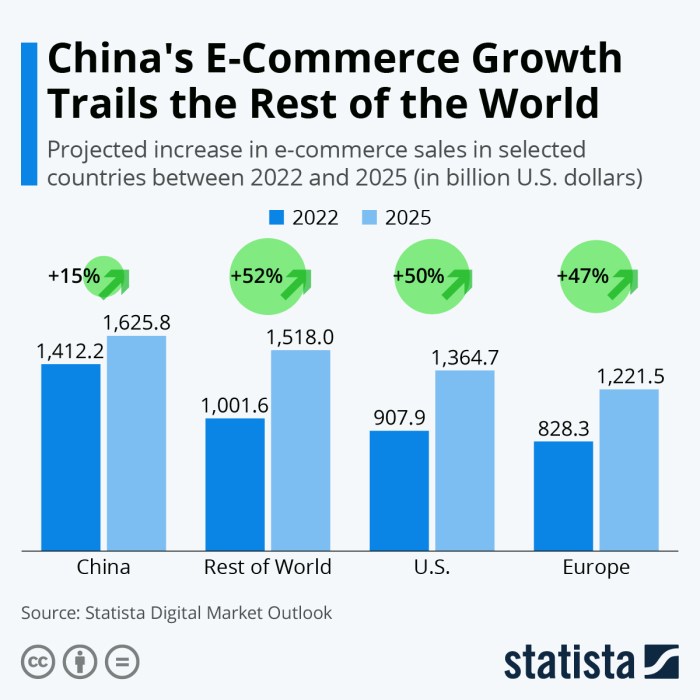Retail consumer e-commerce is growing at single-digit rates. – As retail consumer e-commerce is growing at single-digit rates, it has become a significant force in the global economy. This introductory paragraph provides an overview of the current state of the industry, highlighting key factors contributing to its growth and the competitive landscape.
The growth of e-commerce has been driven by several factors, including the increasing adoption of smartphones and other mobile devices, the expansion of broadband internet access, and the growing popularity of online shopping. The convenience, selection, and price competitiveness of e-commerce have made it an attractive option for consumers, leading to a shift away from traditional brick-and-mortar retail.
Market Overview: Retail Consumer E-commerce Is Growing At Single-digit Rates.

Retail consumer e-commerce has been experiencing a single-digit growth rate, with a projected growth of 8.1% in 2023. This growth is driven by factors such as the increasing popularity of online shopping, the convenience and ease of online purchasing, and the expansion of e-commerce platforms.
However, the growth rate has slowed down in recent years due to factors such as economic conditions, inflation, and changes in consumer behavior. The COVID-19 pandemic had a significant impact on retail consumer e-commerce, as consumers shifted towards online shopping for essential goods and services.
Competitive Landscape, Retail consumer e-commerce is growing at single-digit rates.
The retail consumer e-commerce market is highly competitive, with a number of major players. Amazon is the dominant player in the market, with a market share of over 50%. Other major players include Walmart, Target, and eBay.
These players have a number of strengths, including their large customer base, extensive product offerings, and efficient logistics networks. However, they also face a number of challenges, including competition from new entrants, rising shipping costs, and the need to adapt to changing consumer behavior.
FAQ Resource
What are the key factors driving the growth of retail consumer e-commerce?
The key factors driving the growth of retail consumer e-commerce include the increasing adoption of smartphones and other mobile devices, the expansion of broadband internet access, and the growing popularity of online shopping.
What are the challenges facing the retail consumer e-commerce industry?
The retail consumer e-commerce industry faces a number of challenges, including competition from traditional brick-and-mortar retailers, the need to invest in technology and logistics, and the need to adapt to changing consumer behavior.
What are the future trends in retail consumer e-commerce?
The future of retail consumer e-commerce is expected to be characterized by continued growth, driven by the adoption of new technologies and the emergence of new business models. As e-commerce continues to evolve, businesses will need to adapt to the changing landscape in order to remain competitive and meet the needs of consumers.

